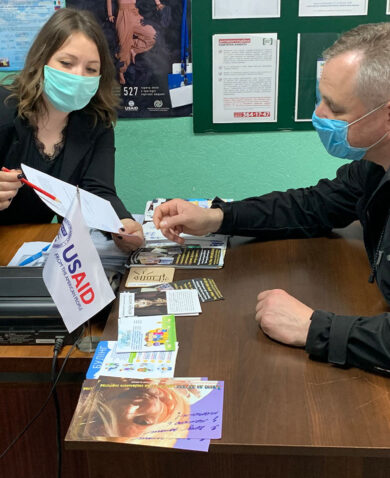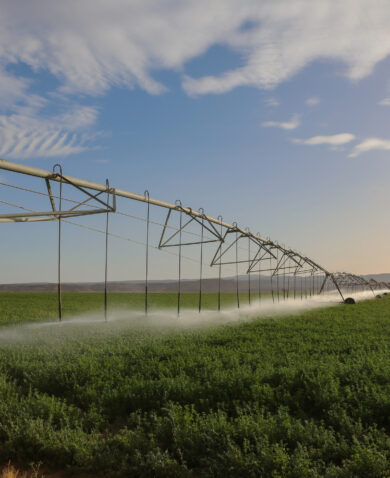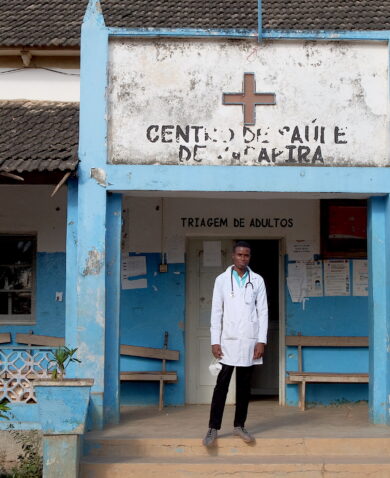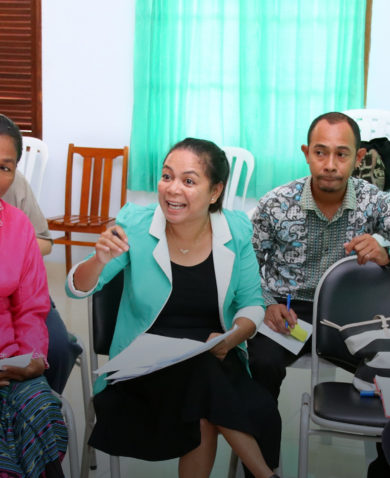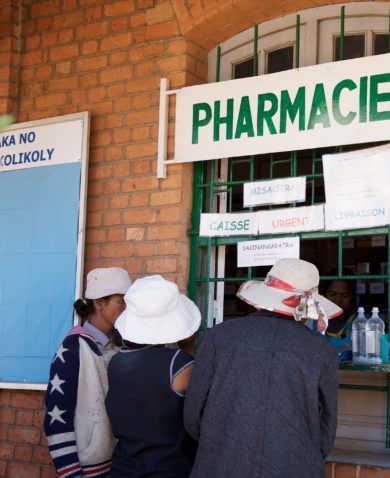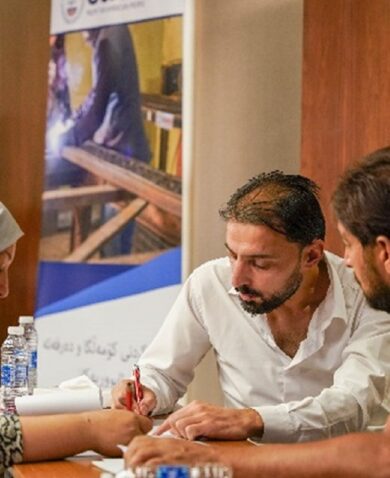The TWP-PEA process should start at program inception, building common knowledge and vision among all staff, starting with in-depth training for staff on the whole PEA process: its reach and scope, its implementation and implications in management, monitoring and evaluation, strategic decision-making process, and activity implementation. This training acts as a doorway for senior management to lead the process of TWP-PEA customization and also provides an opportunity to both build ownership of the process within the team and identify the most adequate staff to spearhead the implementation of the process. Thus, it cannot be wholly contracted out to a third party; overall leadership must rest with program senior management to ensure the organic insertion of TWP-PEA into the full life of the project, with the allocation of adequate time and resources.
PEA Phases in Implementation
Four distinct moments characterize the adoption of a TWP-PEA approach within a program:
- Design phase
- Implementation phase
- Adaptive management kick-off phase
- TWP/PEA iteration phase
All phases are informed by and inform the program’s contractual obligations and effective delivery of results, creating a positive loop through which the program learns how best to adapt and deliver under the changing interests and dynamics of local actors and institutions.
Using TWP-PEA in Colombia to Strategically ‘Pause and Reflect’
Chemonics has been working in several projects to apply TWP-PEA at the project level. For the USAID/Colombia Justice for Sustainable Peace Program (JSP), Chemonics initially proposed rolling out four iterations of PEA throughout the life of the project. Initiating the first PEA in October 2017 — within the first three months of implementation to inform design and start-up — was met with some misunderstanding and frustration from local staff. Local teams initially saw TWP-PEA as additional work and not part of their ongoing tasks. It would take time and joint discussions to show staff the value added from TWP-PEA.
Over the course of the initial PEA and into the review of its findings and their programmatic implications, staff began to see TWP-PEA and adaptive management not as abstract concepts but as useful tools to make politically-informed decisions in real time. USAID’s active participation in the overall PEA process helped build greater trust and understanding leading to the joint agreement that work plans and monitoring, evaluation, and learning (MEL) plans are indeed living documents and need to be flexible and will change as the context dictates.
Since then, the JSP team has adopted and is actively implementing their common commitment to TWP-PEA via ‘pause and reflect’ opportunities, including: (1) quarterly meetings of all staff with a specific time set aside for TWP-PEA discussions; (2) a two-page section in each quarterly report about ongoing “everyday” PEA, how PEA considerations are affecting implementation, and suggestions for changes to the work plan and/or MEL plan; and (3) regional learning exchanges on common areas of interest or challenges. The team has completed their first quarterly analyses and are undertaking very focused political analyses on how the recent presidential elections results may affect current activities as well as Year Two work planning. The MEL specialist feels empowered and has taken ownership of a PEA baseline assessment, supporting program leadership to ensure that future PEAs are a regular part of the JSP MEL system.
With the contextual knowledge gained from TWP and applied PEA, national and regional staff have fostered alliances with unforeseen partners that had not previously been recognized or valued. This has put JSP in a better position to identify and take advantage of new strategic and operational opportunities, and to better respond to the needs and evolving dynamics of the local context.
TWP-PEA: The “So What?”
Given the complex and fluid environments of most development programs, it becomes even more important to embed TWP into programming and ensure politically informed, flexible, and responsive implementation. Integrating TWP-PEA into programs incorporates donor frameworks with practices, but it also tailors project activities to local dynamics. Ultimately, this gives project objectives a higher likelihood for success and sustainability.





